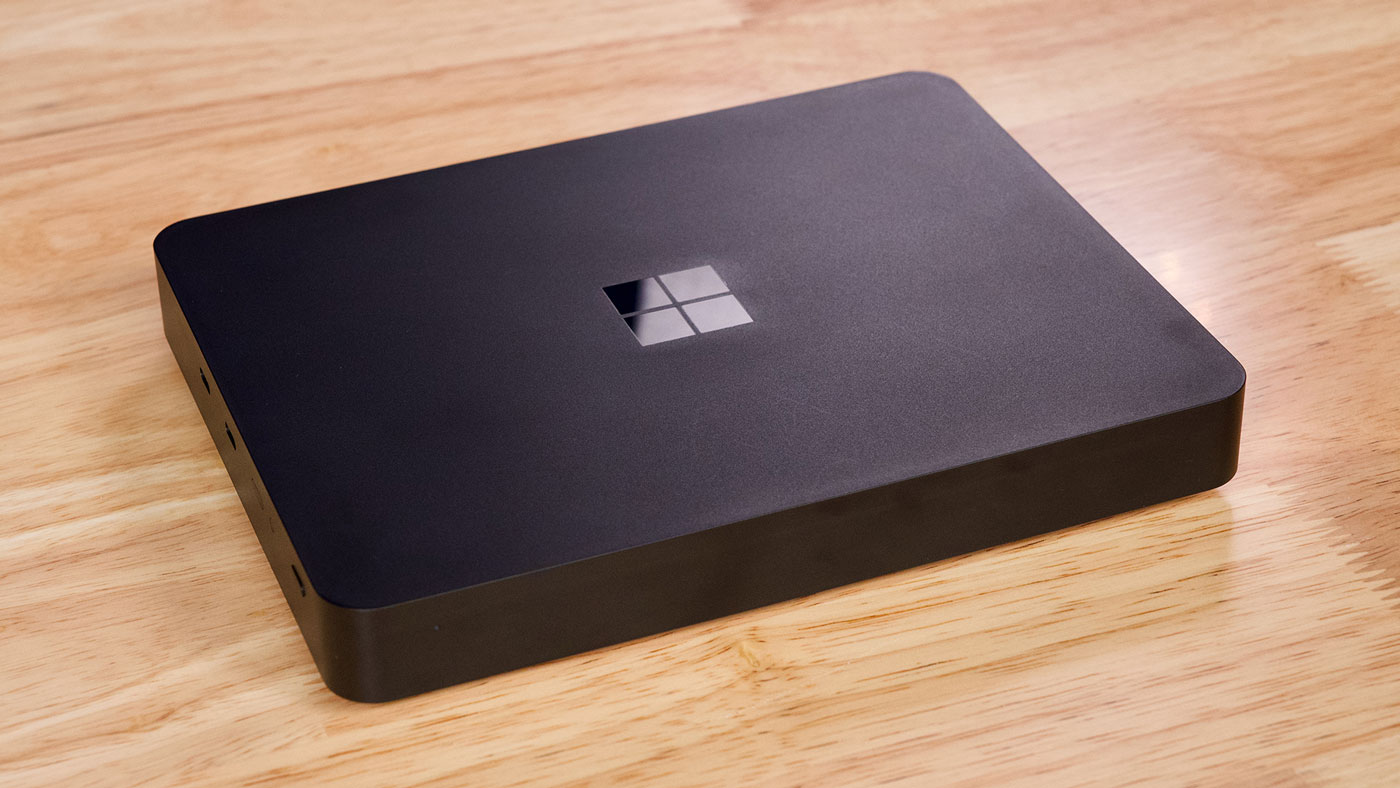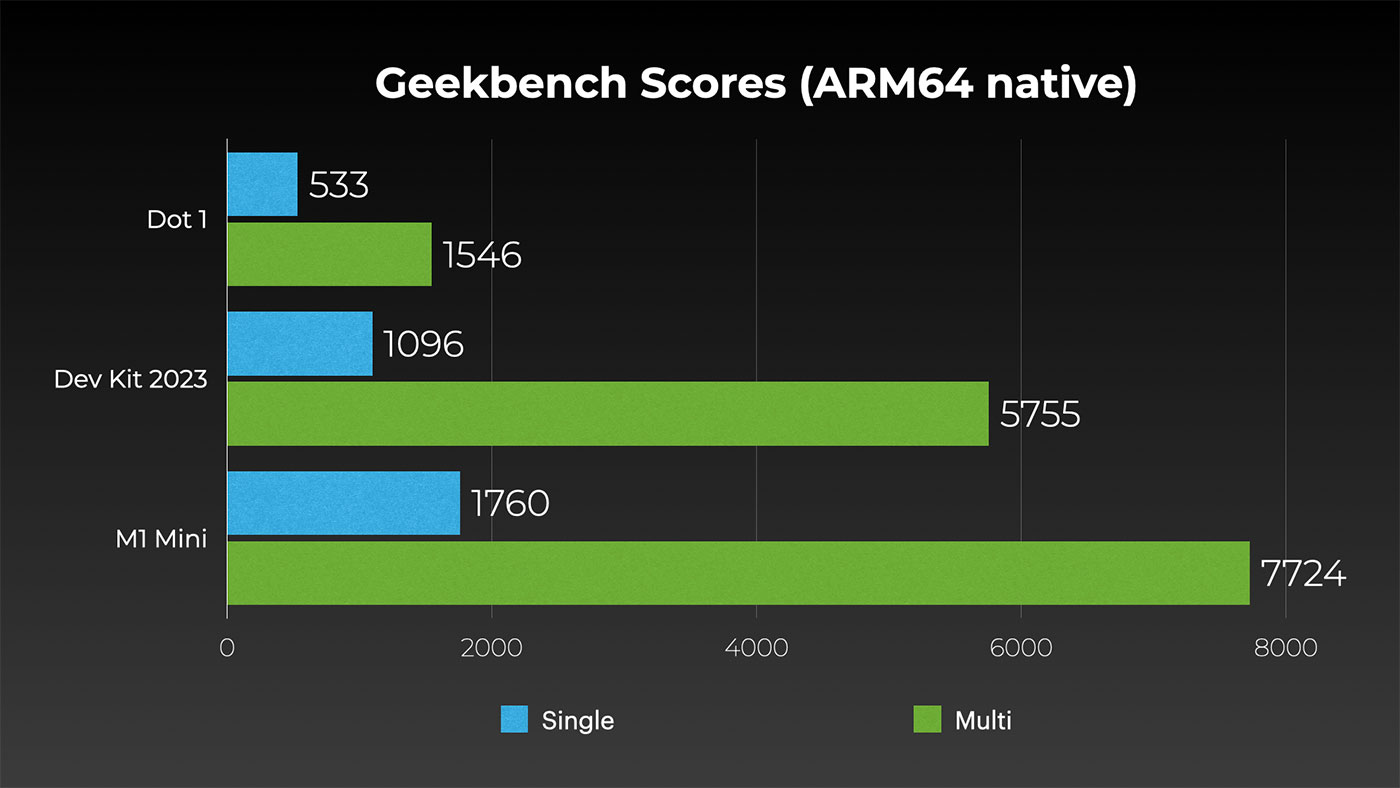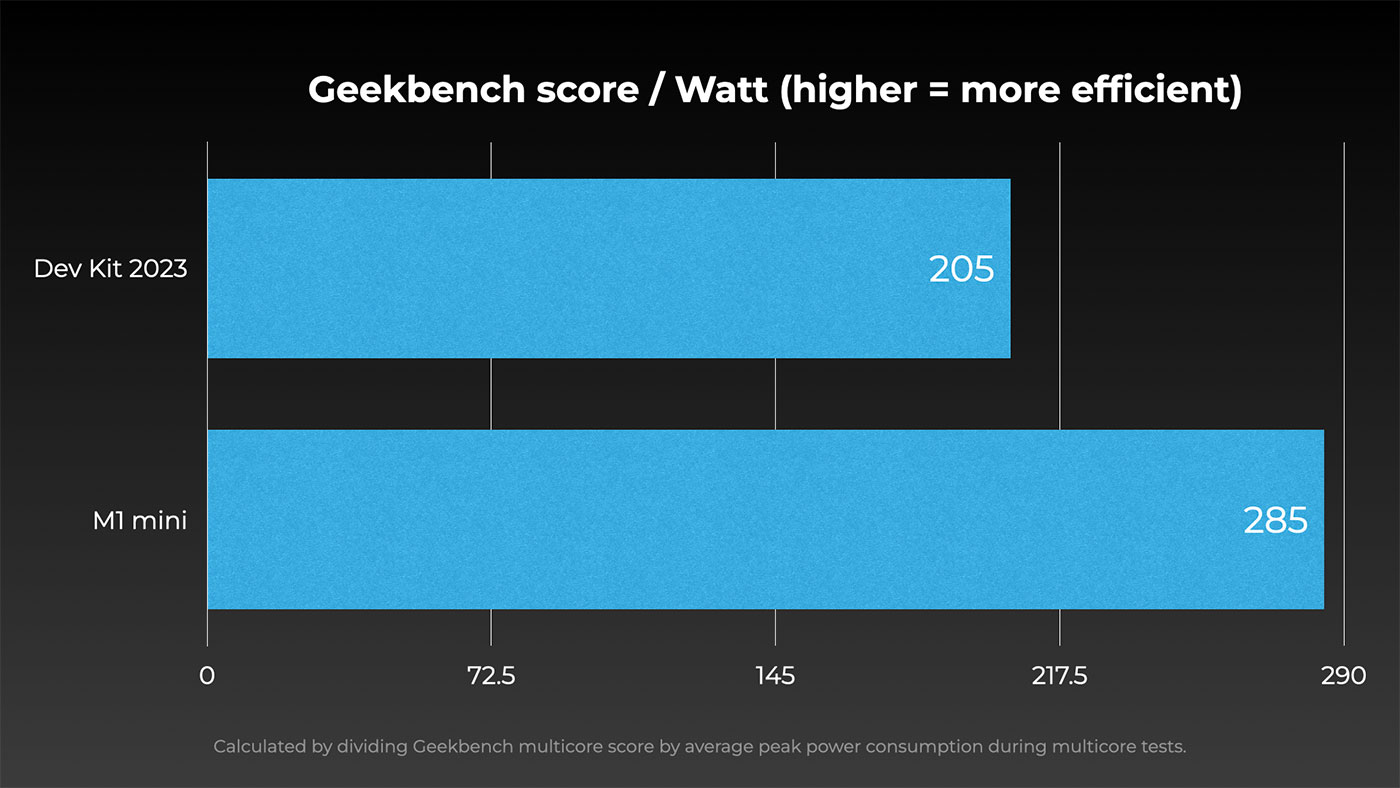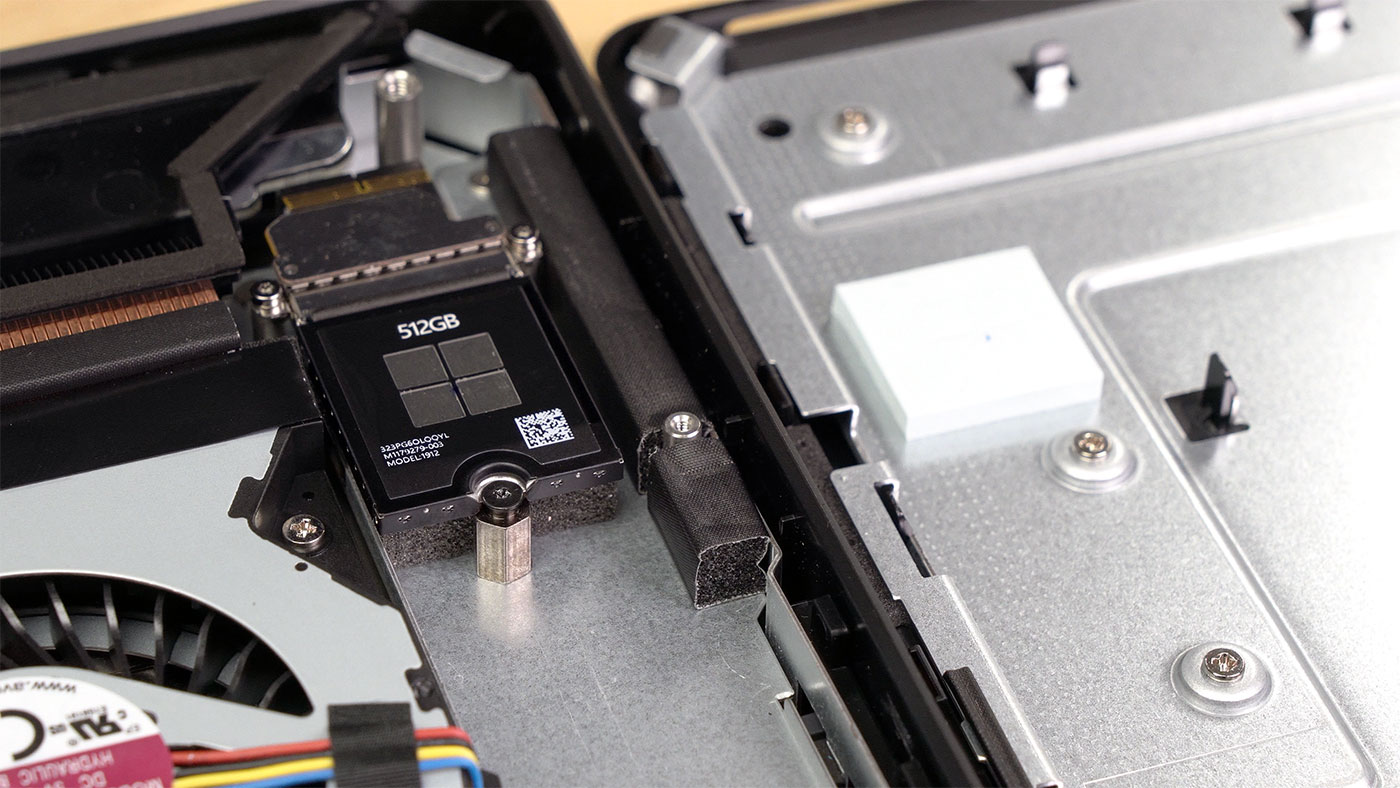Last week Microsoft started selling their $599 Windows Dev Kit 2023, formerly known as 'Project Volterra'.

I got my hands on one after a little bit of a shipping delay, and promptly started tearing it down to see what's inside. You can click here to browse the entire Twitter thread where I posted pictures of the box contents and teardown, or view it below:
Windows Dev Kit 2023 (aka "Project Volterra") has arrived. Box is fine, just includes large power adapter and regulatory papers.
— Jeff Geerling (@geerlingguy) October 31, 2022
A thread 🧵(1/??) pic.twitter.com/QTtD6NPC9c
Eventually I'd like to have this box replace my 10th-gen Intel i3 Windows 10 desktop I use for some light Windows testing, and also perhaps use it as a faster-than-an-SBC Linux ARM workstation.
But for that to happen, it needs to perform. Apple's M1 chips proved ARM can be a serious contender in the desktop space, while also remaining energy efficient. Can Qualcomm's latest stab, the Snapdragon 8cx Gen 3, do the same for Windows on ARM?
Unfortunately, the answer is still no:

That first entry is the $250 Dot 1 Mini PC I reviewed earlier this year. It's a little faster than a Raspberry Pi 4, but the Snapdragon 7c inside is really showing its age.
The second is the Dev Kit, with the 8cx Gen 3 (the same silicon, I believe, used in Microsoft's SQ3 chip). It's noticeably faster—and in many tasks it makes using Windows feel more snappy and x86 applications usable—but it's still not what I'd call 'speedy'.
The M1 blows away the Dev Kit's performance numbers.
And it gets worse—at idle, the mini runs at about 4 watts compared to 5 watts on the Dev Kit. Full blast, the M1 Mac mini is even more efficient, with it's two-year-old Apple Silicon:

All is not lost, though. The Dev Kit is $599, a full hundred bucks less than the entry level M1 Mac mini. And for that price, you get 32 GB of RAM (a Mac mini starts at a paltry 8 GB!), and a 512 GB SSD (Apple tacks on an additional $200 for that).
Oh, and the SSD inside the Dev Kit is upgradeable:

Strangely, only a 2230-sized M.2 mounting standoff is included in the case, and there's no built-in 2280-sized standoff or hole to mount one. So if you want to upgrade to a more standard-sized 2280 SSD—like the one that was shown in the Project Volterra launch video—you'll have to improvise.
The rest of the innards are a bit of a mess. It seems obvious the guts were basically a Surface Pro X-style main board rearranged to fit inside a desktop case. And Microsoft missed out on a few golden opportunities, like adding in a 2.5 Gbps network port instead of a stodgy old 1 Gbps port. But the box does have WiFi 6E and triple display support built in (one via mini DisplayPort, two via USB-C).
This box is a solid device for Windows ARM development. But it's not as useful for Linux. You can run ARM Linux inside WSL (Windows Subsystem for Linux), but you can't yet natively boot into a Linux distro—many have tried and failed already.
I made a video about hte Dev Kit 2023 where I dive a bit deeper into a teardown and benchmarking, and I'll embed that video below:
Overall, it's a decent box. It's quiet, relatively power efficient, and Microsoft's done a great job getting Windows 11 and their own software up and running on ARM. The big question is—will this $599 desktop be enough to push more developers towards cross-compiling for native ARM64 software on Windows?
If not, Windows' own x86 emulation layer still struggles to keep up on ARM. And in an embarrassing turn of events, right now at least, you can eke out more performance running x86 code inside Apple's Rosetta 2 in a Linux VM under Windows than you can using Windows' native emulation layer!
I'm hopeful for Microsoft's future on ARM, but either Qualcomm needs to get their act together, or Microsoft needs to pour money into some other chipmaker to optimize for Windows. Otherwise, the vast gulf between ARM SBCs on the low end and Apple's custom Silicon on the high end will persist.
There's plenty of space for a middle ground, especially if it brings features like all-day battery life and snappy performance to cheap and mid-range Windows laptops, like it has for Apple's MacBook lineup.
Comments
In the video, I mentioned I had trouble getting the Mini DisplayPort connection working with any of my monitors. Apparently, Microsoft's Dev Kit 2023 documentation states:
All the adapters I have are passive. So I just bought a cheap iVANKEY active miniDP to HDMI adapter and I'll re-test with that, to see if I get an output on my monitor.
You do indeed need a an *active* miniDP to HDMI adapter for HDMI monitors (but not DisplayPort), it is also required to access the UEFI BIOS settings on this machine, Type-C only work once the OS drivers load, hence the documented ~24 seconds wait time before output. I'd assume Microsoft could fix this in a future BIOS update, but I'm talking out of turn.
Did the active adapter work for you? I have that same one but can’t still doesn’t seem to work with BIOS
It's interesting in that the new Apple TV 4K for $150 is the same hardware in performance really, but missing the ram and storage. I really wish Microsoft had a $300 consumer product with these internals. $600 and for devs doesn't inspire confidence. Where is the awesome consumer product we need?
Hey!
Can you tell if the M.2 Slot is PCIe 3.0 or 4.0?
Cheers,
Flex
Hi Jeff.
I am curious to know why Linux requires some mystery reverse engineering device trees.
Can't Linux use a similar mechanism to openbsd?
Snapdragon chainloads a UEFI implementation to launch both Windows 11 and the Android bootloader, IIRC.
Anyone know of an egpu that will work with this 2023 Devkit box?
I've just got it myself and puzzled why Windows Night Light feature doesn't
work - it toggles but doesn't change the color. Tried all possible drivers.
Does it work for you? I'm using Dell UltraSharp 24" display which has DP
and using a mDP to DP cable. The monitor was otherwise capable to switch
into Night Light on nVidia Quadro P600 and GeForce 3060 under Windows 10
and 11.
I just got my dev kit last week - do you know if theres a community/discord out there for dev kit users? I didnt see any dedicated subreddits on reddit, and a cursory google doesnt reveal any specific discords/forums. Id love to discuss with other users regarding their experiences and how they use the windows dev kit 2023 rather than reinvent the wheel trying to get things to work on my own.
You got something wrong with your setup man. I get a these scores
1538 single core
6447 multi-core cpu
Stop taking apples money and do a proper comparison.
The numbers in this post were from my testing with Geekbench 5 a couple years ago (it was the latest version at the time). Since then, Geekbench 6 was released, and I've re-tested all my hardware with it. See: https://browser.geekbench.com/user/446940.
Jeff, or anyone else, does this thing support pxe? Cause want an ARM box for testing an sccm task sequence.